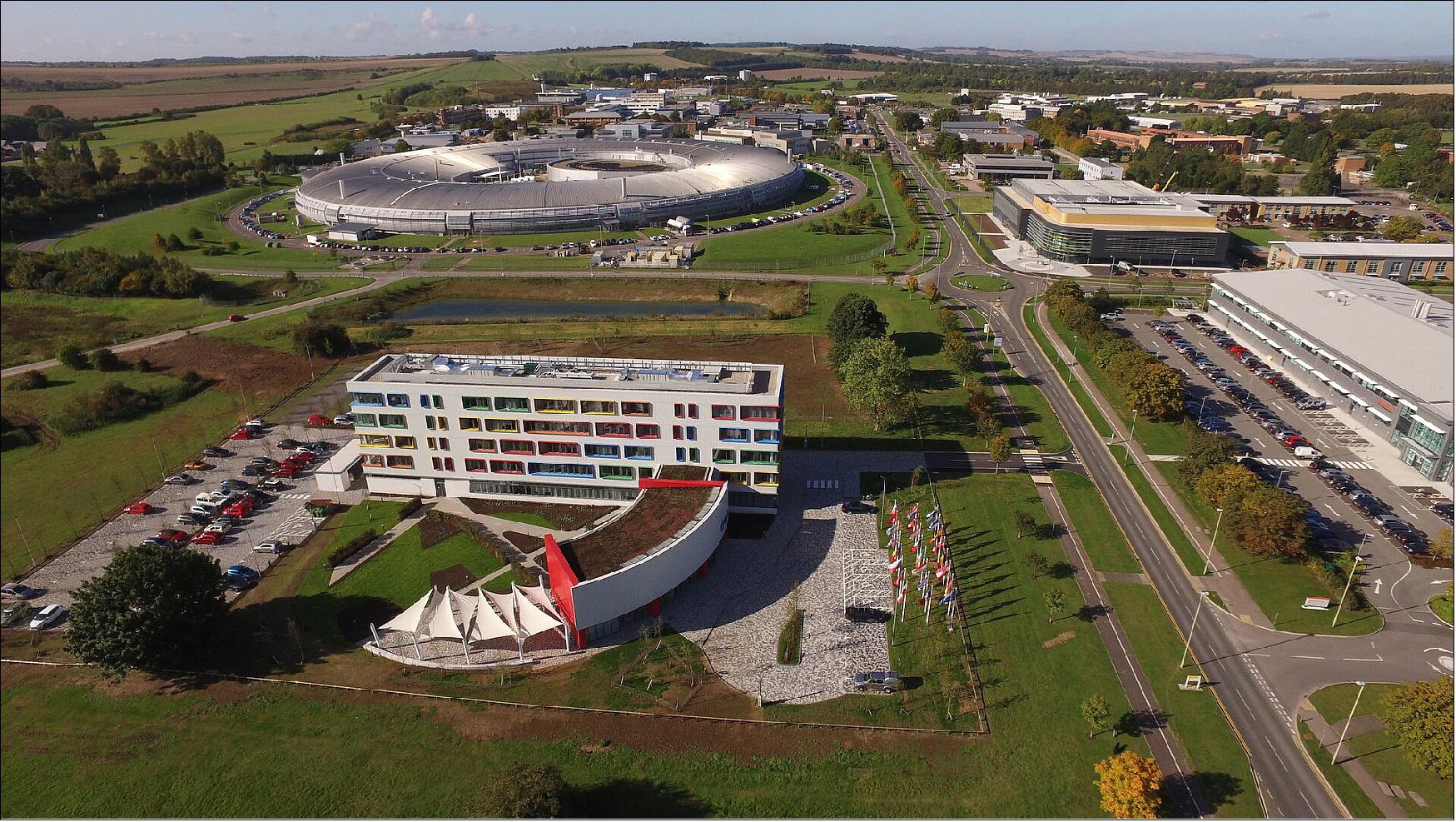ESA ECSAT (European Space Agency - European Centre for Space Applications and Telecommunications)
People and News
ESA ECSAT (European Space Agency - European Centre for Space Applications and Telecommunications)
February 2022: Climate models are an important tool for scientists to understand our past climate and provide projections of future change. As such, they are in increasing demand as part of efforts to avert global warming and reduce risks associated with environmental change. To meet this demand, the World Climate Research Programme will open a new international office in the United Kingdom on 1 March 2022 that will coordinate the programme’s Climate Model Intercomparison Project (CMIP). 1)

The CMIP brings together modelling centres from around the world, with the goal of benchmarking, intercomparing and improving state-of-the-art climate model simulations and future projections. CMIP is a large activity with 140 models from 52 institutions representing 26 countries. For the latest cycle alone, CMIP6, the volume of data downloaded reached over 28 petabytes and will only continue to increase.
The project provides crucial impetus to climate science and the outputs provide foundational model datasets used by climate assessments that contribute to global climate negotiations and decision-making – as recently demonstrated in CMIP6 which was used extensively in the Intergovernmental Panel on Climate Change’s Sixth Assessment Report.
In recent years, use of CMIP products and the demands on participating research groups has grown significantly to support not just these global climate negotiations, but also national climate assessments, climate services and private sectors striving to manage exposure to future risks and realise opportunities.
The new office will be hosted alongside ESA’s Climate Office at its European Centre for Space Applications and Telecommunications (ECSAT) facility in the United Kingdom and will take the lead in coordinating scientific and technical planning, as well as stakeholder engagement.
The new office will be under the leadership of the World Climate Research Programme (WCRP) Working Group on Coupled Modelling (WGCM), its Infrastructure Panel (WIP) and CMIP. This will enable participating research groups to focus on the most urgent climate science questions, while also meeting the needs of a growing and diverse user base.
Headed by incoming director, Eleanor O’Rourke, the new office will enhance the effectiveness and efficiency of support for national and international assessments, and coordinate discussions with the scientific and user communities on further standardisation protocols, data policy and quality-control of model output and analysis.
“With five years of initial funding, the office will be key to ensuring CMIP has the support needed to perform the next generation of climate projections and climate assessments, thereby also supporting the move towards more regional-scale climate change information,” explains Detlef Stammer, Chair of WCRP’s Joint Scientific Committee.
Earth observation data has great value in providing datasets that can be used for model evaluation and improvements, and the CMIP International Project Office will work closely with WCRP partners, including ESA, to provide seamless integration of model and observation information.
Figure 2: As part of the Coupled Model Intercomparison Project (CMIP) organized under the auspices of the World Climate Research Programme’s (WCRP) Working Group on Coupled Modelling (WGCM) many hundreds of climate researchers, working with modeling centres around the world, will share, compare and analyze the latest outcomes of global climate models. These model products will fuel climate research for the next 5 to 10 years, while its careful analysis will form the basis for future climate assessments and negotiations (video credit: WCRP)
According to Susanne Mecklenburg, Head of ESA’s Climate Office, “Hosting the new CMIP office aligns with ESA’s long-term strategic commitment to provide high-quality observation-based climate data records to support the modelling community.
“The accurate spatial and temporal view provided by satellites helps to reduce uncertainties in climate models, gives greater confidence in their results and ultimately supports nations to deliver effective climate action and fulfil their pledges under the Paris Agreement.”
Mike Sparrow, Head of the WCRP Secretariat, comments, “Climate observations and modelling need to go hand-in-hand to provide the best possible projections of our future climate. The new project office will provide critical support for the new WCRP Strategy and we are looking forward to work with ESA to support the CMIP process with the new International Project Office.”
Catherine Senior, Head of Understanding Climate Change at the UK Met Office Hadley Centre, comments, “The Met Office and UK academic partners welcome the new CMIP International Project Office. It will greatly enhance engagement in future CMIP activities and join-up the UK and international efforts on climate modelling with Earth observations.”
The new office will be run by staff from HE Space Operations under contract to ESA.
Jason Maroothynaden, UK Managing Director of HE Space Operations says, “We are delighted to have this opportunity to support both ESA and WCRP climate modelling activities. The CMIP International Project Office also aligns with HE Space’s focus on climate change and sustainability.”
Development Status of ESA/ECSAT
• ESA/ECSAT (European Center for Space Applications and Telecommunications), Harwell, UK. ESA/ECSAT opened in July 2015. ESA’s new UK facility, ECSAT, has been developing steadily since 2008, following the UK government’s decision to increase its contribution to ESA. — ECSAT supports activities related to telecommunications, climate change, technology, science and ‘integrated applications’ – the combined use of different space and terrestrial technologies, data and infrastructures to create new everyday applications. 2) 3) 4)
- Named after ESA’s British first Director General, Roy Gibson, ECSAT’s new building will host 120+ jobs including teams in telecommunications and integrated applications. Special emphasis will be put on the development of new markets for satellite-based services and applications.
References
1) ”ESA hosts new office to coordinate global climate modelling push,” ESA Applications, 9 February 2022, URL: https://www.esa.int/Applications/Observing_the_Earth/Space_for_our_climate
/ESA_hosts_new_office_to_coordinate_global_climate_modelling_push
2) “UK space industry boosted: major new space facilities launched,” UKSA, July 9, 2015, URL: https://www.gov.uk/government/news/uk-space-industry-boosted-major-new-space-facilities-launched
3) “Flags are raised at ESA's first UK Center,” ESA, July 9, 2015, URL: http://www.esa.int/ESA_in_your_country/United_Kingdom/Flags_are_raised_at_ESA_s_first_UK_centre
4) ”ECSAT: Space for Daily Life,” ESA Agency, 14 June 2017, URL: https://www.esa.int/ESA_Multimedia/Videos/2017/06/ECSAT_Space_for_Daily_Life